If you’ve found a large, dark insect crawling around your basement or bathroom, you might be wondering whether it’s a water bug or cockroach. This confusion happens more often than you’d think. After working as a registered technician for four years in the DC metro area, I’ve gotten countless calls from homeowners who think they’re dealing with water bugs when they’re actually facing a cockroach problem.
The truth is, most insects people call “water bugs” are actually cockroaches. True water bugs are giant aquatic predators that live in ponds and streams, while the insects invading your home are likely Oriental or American cockroaches that have earned the nickname “water bug” because they hang out in damp areas.
Understanding the difference between water bug vs cockroach matters because the treatment approach is completely different. Let’s clear up this confusion once and for all.
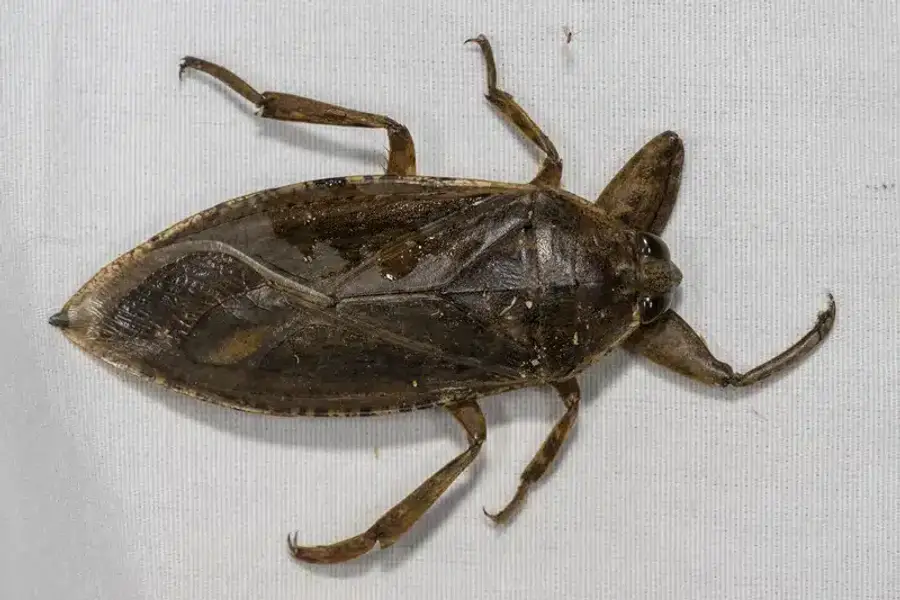
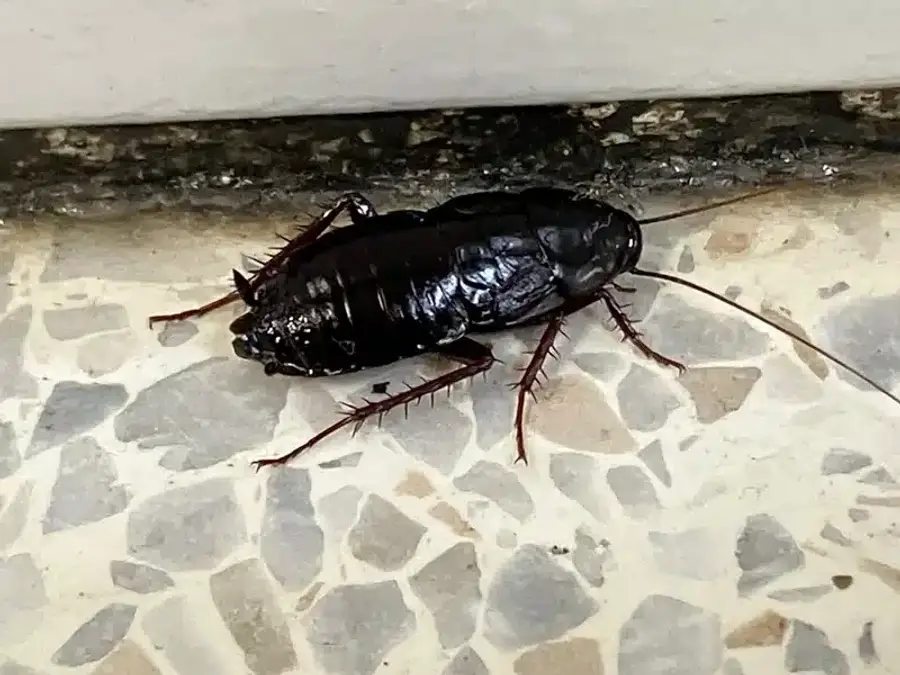
Why the Water Bug vs Cockroach Confusion Exists
The mix-up between water bugs and cockroaches didn’t happen by accident. Oriental cockroaches love damp, humid places like basements, floor drains, and sewer systems. When homeowners find these dark insects near water sources, they naturally assume they’re dealing with “water bugs.”
Additionally, calling an insect a “water bug” sounds much less alarming than saying “cockroach.” Nobody wants to admit they have roaches, so the euphemism stuck. In our family business serving the DMV area for over 50 years, we’ve seen this terminology become so common that even pest control companies sometimes use it.
American cockroaches add to the confusion because they often emerge from storm sewers after heavy rains. In some regions, people have called them water bugs for generations, passing down the incorrect terminology through families.
What True Water Bugs Actually Are
Real water bugs belong to the family Belostomatidae and are also called giant water bugs or toe-biters. These are completely aquatic predators that spend their entire lives in ponds, marshes, and slow-moving streams.
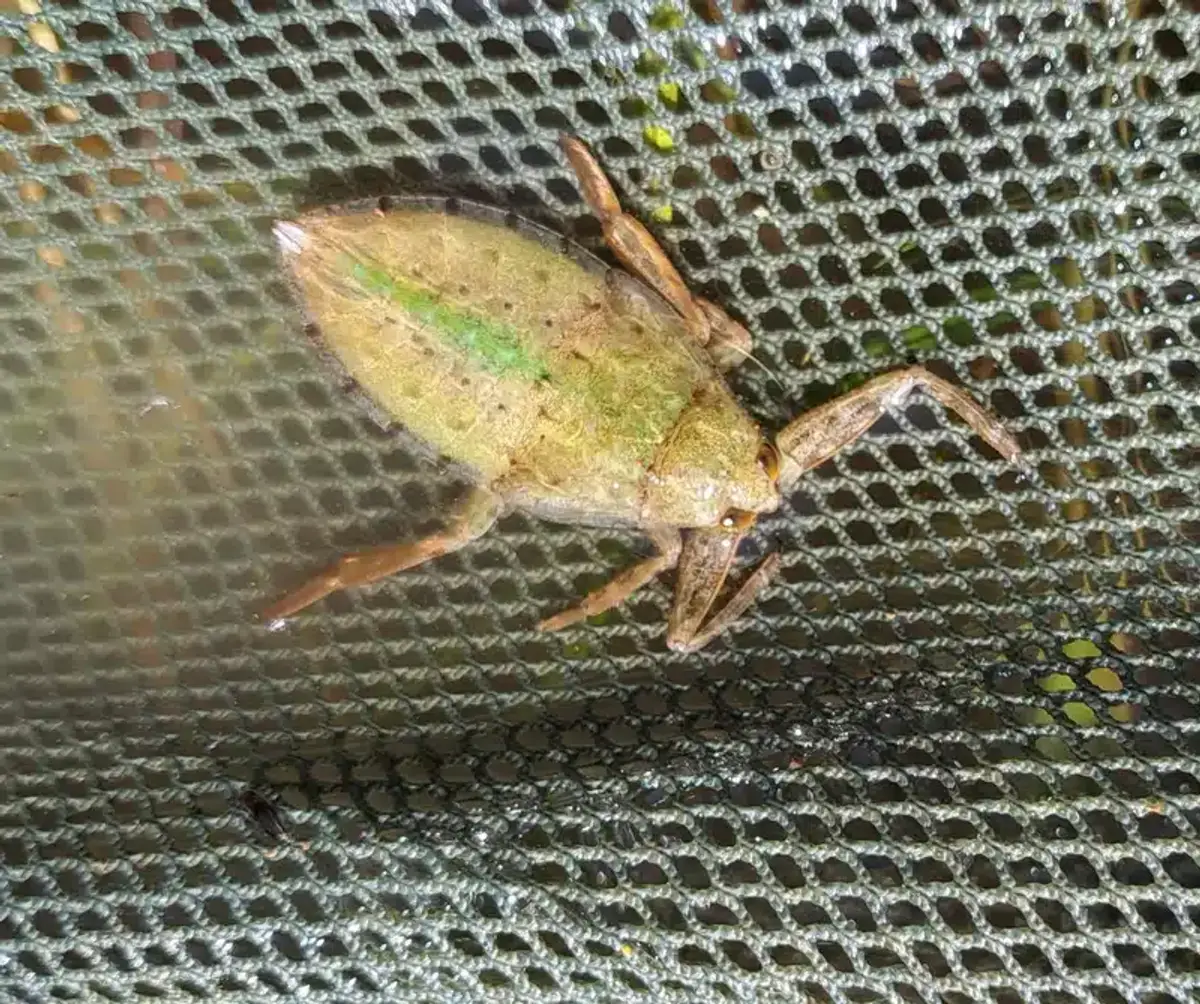
Giant water bugs can reach 2 to 2.6 inches long, making them among the largest insects in North America. They have flattened, oval bodies with short beak-like mouthparts and powerful front legs that work like pincers to grab prey.
Their hind legs are shaped like oars with swimming hairs, perfectly designed for life underwater. These predators hunt tadpoles, small fish, and even baby turtles.
What does the science say?
According to the National Park Service, male water bugs exhibit unique parenting behavior by carrying eggs on their backs until they hatch. This paternal care is rare among insects and demonstrates the sophisticated reproductive strategies of true aquatic water bugs. The NPS notes that these massive predators can reach over 2 inches long and are among North America’s largest true bugs, distinguishing them clearly from terrestrial cockroaches.
Most importantly, true water bugs can bite and inject painful venom. The bite feels like a bee sting and can cause temporary numbness. This is completely different from cockroaches, which cannot bite humans at all.
Safety Warning
Always use gloves when handling suspected water bugs. True water bugs can deliver extremely painful bites that cause temporary numbness and swelling. If you’re bitten, clean the wound thoroughly and apply ice to reduce swelling. Seek medical attention if you experience severe reactions.
Oriental Cockroaches: The Real “Water Bugs” in Your Home
When you find what looks like a water bug in your basement or crawling out of a drain, it’s almost certainly an Oriental cockroach. These roaches have earned the “water bug” nickname because they thrive in damp, cool environments.
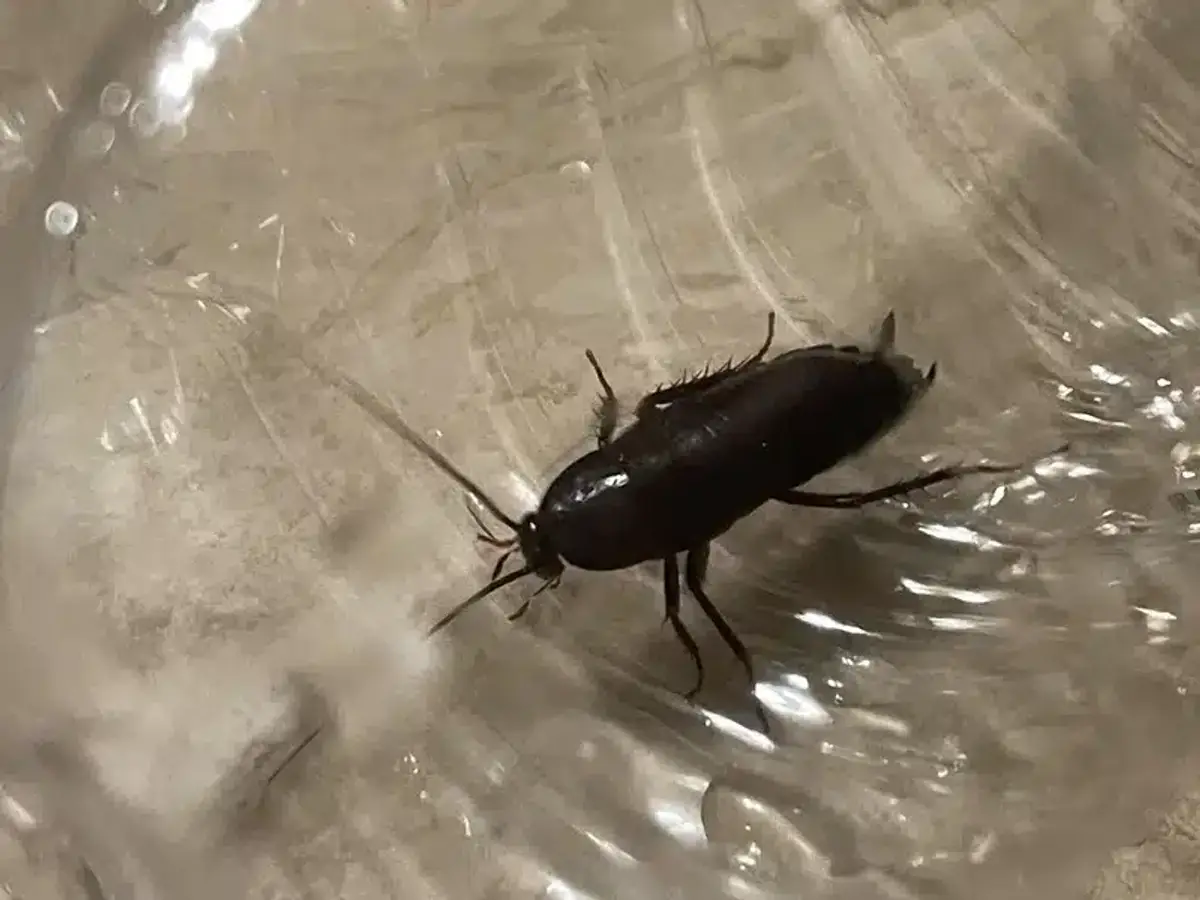
Oriental cockroaches measure about 1 inch long - less than half the size of true water bugs. They’re dark brown to black with a greasy appearance. The females look wingless, while males have short wings that don’t allow them to fly.
These roaches prefer temperatures below 84°F, which is why they’re common in basements, crawl spaces, and sewer systems throughout the DC metro area. Unlike true water bugs, Oriental cockroaches are terrestrial insects that just happen to like moisture.
What does the science say?
According to Penn State Extension, Oriental cockroaches can mechanically transmit over 22 different human pathogens including bacteria, viruses, and parasitic worms. Their research shows these roaches commonly carry Salmonella, Staphylococcus, and Streptococcus bacteria. Additionally, their shed skin and droppings contain allergens that can trigger asthma attacks in sensitive individuals, making proper identification and control critical for public health.
They’re definitely not something you want living in your home.
American Cockroaches: Another “Water Bug” Impostor
American cockroaches also get called water bugs, especially in southern regions. These are larger than Oriental roaches at 1.5 to 2 inches long, but still smaller than true water bugs.
American roaches are reddish-brown and can glide short distances when it’s warm. They commonly live in municipal sewer systems and emerge during heavy rains, which reinforces the water bug connection in people’s minds.
In the DMV area, we often see these roaches in commercial kitchens and older buildings with steam tunnels or extensive plumbing systems. Like Oriental roaches, they can spread bacteria and other pathogens throughout your home.
Key Difference Between Water Bugs and Cockroaches
Learning to tell the difference between water bug vs cockroach comes down to a few key features. Here’s what to look for:
Size Comparison
True water bugs are massive - about the length of a house key or longer. If the insect is smaller than 2 inches, it’s definitely a cockroach, not a water bug.
Body Shape and Features
Water bugs have short, thick antennae that are hard to see from above, plus distinctive pincer-like front legs. Cockroaches have long, thin antennae that stick out prominently and normal walking legs.
Habitat Differences
Find the insect in water or near a pond? It might be a true water bug. Found it in your basement, bathroom, or kitchen? That’s definitely a cockroach.
Bite Capability
True water bugs can deliver extremely painful bites. Cockroaches cannot bite humans at all. If you get bitten, you’re dealing with a real water bug.
| True Water Bug | Cockroach | |
|---|---|---|
| Size | 2-2.6 inches | 1-2 inches |
| Habitat | Ponds & streams | Indoors (damp areas) |
| Front Legs | Pincer-like | Normal walking legs |
| Antennae | Short & thick | Long & thin |
| Can Bite | Yes (painful) | No |

Behavior Patterns: Water Bug vs Cockroach
The way these insects behave gives you major clues about what you’re dealing with. True water bugs are ambush predators that sit motionless underwater waiting for prey to swim by. They’re strong fliers attracted to lights at night, which is how they occasionally end up in pools or on patios.
Oriental cockroaches, on the other hand, are sluggish and avoid light. They scavenge for food scraps and organic matter, following plumbing lines and staying close to moisture sources. These roaches rarely venture far from their hiding spots during the day.
American cockroaches are much more active, running quickly when disturbed. They’re opportunistic omnivores that will eat almost anything, from pet food to book bindings.
Geographic Range in the DMV Area
In Virginia, Maryland, and DC, true water bugs live in natural water bodies throughout the Chesapeake watershed. You might encounter them in ponds at parks or retention areas, but they’re rarely found indoors.
Oriental cockroaches, however, are perfectly adapted to urban environments. They thrive in the row homes, apartments, and older buildings common throughout the DC metro area. The combination of humidity, aging infrastructure, and connected sewer systems creates ideal conditions for these roaches.
Our service areas like Alexandria and Reston see Oriental cockroach problems year-round, with peak activity during the warmer months when they become more active.
Why Proper Pest Identification Matters for Cockroach Control
Getting the water bug vs cockroach identification right saves time, money, and frustration. The control methods are completely different for these insects.
If you find a true water bug indoors, the solution is simple - carefully capture it with gloves or a cup and release it outside near water. Fix any damaged window screens to prevent future visitors, but there’s no need for pesticide treatments.
Cockroaches require a completely different approach. Whether you’re dealing with Oriental roaches, German roaches, or other species, you need integrated pest management that includes sanitation, exclusion, and targeted treatments.

Misidentifying Oriental roaches as harmless water bugs can delay proper treatment, allowing the infestation to grow. These roaches reproduce quickly and can spread throughout your home if not addressed properly.
What to Do If You Find These Insects Indoors
When you discover what might be a water bug vs cockroach in your home, take a moment to properly identify it before taking action.
For True Water Bugs
Use gloves or a container to safely capture the insect - remember, they can bite. Release it outside near a pond or stream where it belongs. Check your window screens and repair any tears that might allow future intrusions.
For Cockroaches
Take photos to help with species identification, then begin integrated pest management. Remove moisture sources, seal cracks around pipes and drains, and eliminate food sources. In DMV basements, focus on dehumidification and proper drainage.
Consider professional treatment, especially for Oriental and American cockroaches. These species often indicate larger problems with moisture and sanitation that need addressing.
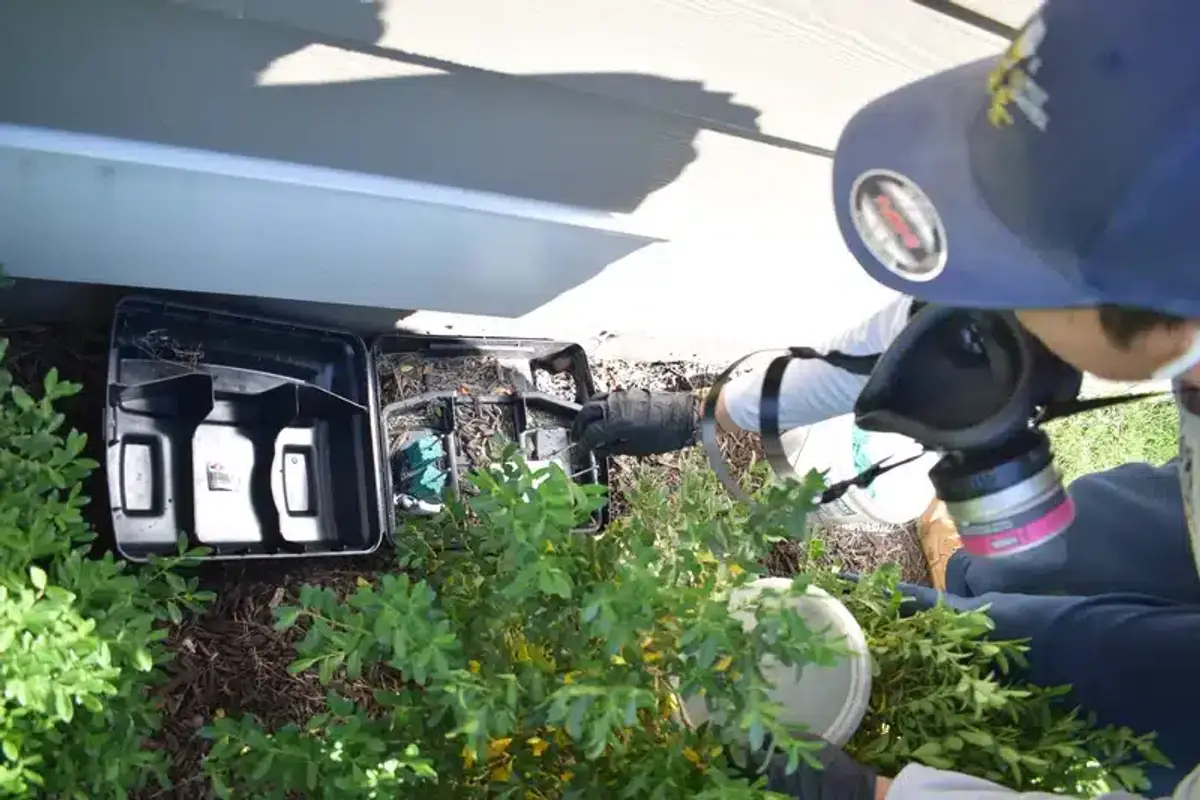
Health and Safety Concerns with Roaches vs Water Bugs
The health implications differ dramatically between water bug vs cockroach encounters. True water bugs pose minimal risk beyond their painful bite, which typically causes temporary pain and swelling but no long-term effects.
Cockroaches present serious health concerns. According to Penn State Extension, they can mechanically transmit bacteria like Salmonella and trigger asthma attacks through allergens in their droppings and shed skin.
Oriental and American cockroaches also contaminate food and surfaces as they travel from sewers and drains into living areas. This is why proper identification and control matter so much for your family’s health.
Expert Cockroach Identification: Professional vs DIY Approaches
True water bugs require no pest control treatment - just removal and prevention of future entry. But cockroach control often benefits from professional expertise, especially when dealing with established infestations.
During my years in the field, I’ve seen homeowners waste time and money trying cockroach sprays on what they thought were water bugs, or failing to address the moisture conditions that attract Oriental cockroaches in the first place.
Professional treatment focuses on species-specific approaches. Our water bug article explains more about true aquatic species, while targeted cockroach control addresses the root causes of infestations.
Prevention Strategies for Water Bug vs Cockroach Pest Problems
Preventing water bug vs cockroach confusion starts with understanding what attracts each type of insect. True water bugs only enter homes accidentally when flying toward lights at night.
Cockroach prevention requires controlling moisture, sealing entry points, and maintaining good sanitation. In the DMV area’s humid climate, dehumidifiers and proper ventilation make a huge difference in deterring Oriental cockroaches.
Essential Prevention Steps
- Moisture Control: Use dehumidifiers in basements, fix leaks promptly, and ensure proper ventilation in humid areas
- Seal Entry Points: Caulk cracks around pipes, drains, and foundation walls where cockroaches commonly enter
- Sanitation: Remove food sources, keep areas clean, and eliminate standing water in floor drains
- Regular Monitoring: Check common hiding spots monthly for signs of roach activity
Regular inspections help catch problems early. Look for dark, greasy spots along baseboards, musty odors, and actual insects in typical hiding spots like under sinks and around water heaters.
Understanding the difference between these insects helps homeowners take appropriate action quickly. Whether you’re dealing with a true water bug that needs relocating or cockroaches that require comprehensive treatment, proper identification is the first step toward a solution.
If you’re unsure about what you’ve found in your home, don’t hesitate to reach out for professional identification and treatment options. Our registered technicians can help determine exactly what you’re dealing with and recommend the most effective approach. Call us at 703-683-2000 or email info@bettertermite.com for expert assistance.
Frequently Asked Questions
Are water bugs and cockroaches the same thing?
+
No, true water bugs and cockroaches are completely different insects. True water bugs are large aquatic predators that live in ponds and streams, while cockroaches are terrestrial scavengers. However, many people incorrectly call Oriental and American cockroaches "water bugs" because they're often found in damp areas.
How can I tell if it's a water bug or cockroach?
+
The easiest way to tell the difference is size and location. True water bugs are 2+ inches long with pincer-like front legs and are found near water. Cockroaches are smaller (1-2 inches), have long antennae, and are found in kitchens, bathrooms, or basements. True water bugs can also bite painfully, while cockroaches cannot bite humans.
Do water bugs bite?
+
True water bugs can deliver extremely painful bites that feel like bee stings and can cause temporary numbness. This is one of the key differences between water bugs and cockroaches - cockroaches cannot bite humans at all. If you've been bitten, you're dealing with a true water bug, not a cockroach.
Why are Oriental cockroaches called water bugs?
+
Oriental cockroaches earned the nickname "water bugs" because they prefer damp environments like basements, floor drains, and sewer systems. When homeowners find these dark insects near water sources, they assume they're water bugs. The term also sounds less alarming than "cockroach," so the euphemism stuck over time.
Are water bugs dangerous?
+
True water bugs pose minimal danger beyond their painful bite, which causes temporary discomfort but no long-term effects. However, cockroaches that are mistakenly called water bugs can spread bacteria, trigger allergies, and contaminate food. The health risks depend on which insect you're actually dealing with.
How do I get rid of water bugs in my house?
+
If it's a true water bug, simply capture it with gloves and release it outside near water - no pest control needed. If it's actually a cockroach (which is more likely), you'll need integrated pest management including moisture control, sealing entry points, sanitation, and possibly professional treatment depending on the species and severity.
Do water bugs live in sewers?
+
True water bugs do not live in sewers - they need clean, oxygenated water like ponds and streams. However, Oriental and American cockroaches (often called water bugs) do live in municipal sewer systems. This sewer habitat is another reason why these cockroaches get misidentified as aquatic insects.
What attracts water bugs to my home?
+
True water bugs are attracted to lights at night and may accidentally fly into homes, but they don't seek indoor habitats. Cockroaches that are called "water bugs" are attracted to moisture, warmth, food sources, and shelter. In the DMV area, controlling humidity and fixing plumbing leaks helps deter these roaches.
With five years of hands-on experience in the pest control industry, George Schulz is a registered technician with the Virginia Pest Management Association and a proud third-generation professional in a family business that's been protecting homes for over 57 years. He manages and trains a team of service pros while also leading internal research efforts—recently spearheading a deep-dive review of thousands of documents on pest control materials to hand-pick the most kid and pet friendly, most effective solutions tailored specifically for homes in the DC metro area.
